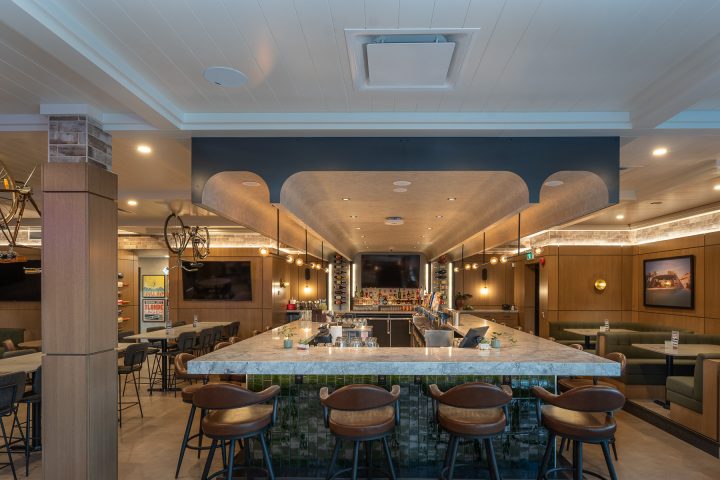
In the vibrant mosaic of Canada’s culinary scene, restaurants strive not only to tantalize taste buds but also to provide an unforgettable dining experience. Central to this experience is the restaurant’s interior design, an intricate fusion of aesthetics, ambiance, and functionality. Yet, comprehending the multifaceted costs associated with restaurant interior design in Canada demands a deeper exploration. This comprehensive blog delves into the intricate factors underpinning these costs, offering restaurateurs invaluable insights for informed decision-making.
Factors Shaping Restaurant Interior Design Costs
1. Geographical Variability
The sweeping landscapes of Canada house a diverse range of urban centers and localities, each with its cost dynamics. High-cost regions like Toronto, Vancouver, and Montreal demand significant financial outlays due to elevated real estate prices and living expenses. The locale also influences design themes, as the interior must resonate with the local culture and clientele.
2. Magnitude of Space & Layout Complexity
A restaurant’s spatial dimensions and intricacies lay the foundation for its interior design costs. Larger establishments necessitate many furnishings, decor, and materials, which invariably impact the budget. Moreover, the layout’s flow and functionality are paramount; intricate arrangements might entail expenses for spatial planning and adjustments to optimize customer traffic and comfort.
Need Help to Start Your Restaurant?
Click here for Restaurant Builders Full Service
3. Design Concept and Theming
A restaurant’s design concept and thematic direction become pivotal in crafting its unique identity. Whether an establishment embodies rustic charm, refined elegance, or contemporary industrial chic, the chosen theme ripples through material selection, lighting, furnishings, and decor choices, significantly influencing the cost.
4. Materials and Finishes
The tactile essence of a restaurant lies within its materials and finishes. Opting for sumptuous hardwood flooring, plush upholstery, custom fixtures, and designer lighting can elevate the ambiance and inflate expenses. Conversely, more budget-conscious material selections can maintain cost controls, albeit with potential trade-offs in visual appeal.
>> Continue reading: restaurant renovation cost.
5. Furniture and Fixture Selection
The delicate equilibrium between functionality and aesthetics is mirrored in the selection of furniture and fixtures. Bespoke furniture or artisanal pieces could amplify costs, while ready-made alternatives offer cost-effective avenues. Striking a balance is pivotal to ensuring that chosen elements endure the rigors of a bustling restaurant environment without compromising visual allure.
6. Lighting and Acoustic Precision
Crafting the desired mood hinges on adept lighting and acoustic considerations. Immersive lighting fixtures, strategic illumination, and acoustic enhancements can be integral to the dining ambiance. While augmenting the sensory experience, these elements can incrementally contribute to the project’s cost due to their specialized nature.
7. Skilled Labor and Professional Fees
The orchestra of skilled professionals, including interior designers, architects, and contractors, conducts the symphony of restaurant interior design. Their expertise ensures a harmonious blend of aesthetics, safety, and regulatory compliance. Yet, their fees constitute a substantial portion of the project’s budget, underscoring the importance of aligning expectations with financial plans.
>> Continue reading: 5 critical elements in the design of a buffet restaurant.
Bar & Restaurant Construction Turnkey Service & Projects
Restaurant Construction Company – BUILD IT / List of Bar & Restaurant Design Construction Projects
8. Navigating Permits and Regulations
Adhering to local regulations and obtaining requisite permits is a non-negotiable step in restaurant interior design. The cost of these prerequisites can diverge significantly based on project scope and location. Factoring these into the financial calculus preemptively prevents unforeseen delays and economic bottlenecks.
Conclusion:
Beyond culinary mastery, a restaurant’s allure resides in its ambiance and aesthetic tapestry. The intricate tapestry of restaurant interior design costs in Canada is woven with threads of geographic variation, spatial considerations, design themes, material choices, professional expertise, and regulatory compliance. While the initial investment might appear substantial, the dividends of a thoughtfully conceived interior design extend through the years, fostering patron attraction and loyalty.
A holistic approach best serves Canadian restaurateurs embarking on interior design ventures. Grounded in a comprehensive grasp of budget constraints, priorities, and overarching goals, collaborations with seasoned professionals streamline the design journey. These experts weave the myriad elements, aligning artistic visions with fiscal realities. Ultimately, investing in a meticulously tailored restaurant interior design crystallizes an establishment’s ethos, brand identity, and enduring impressions etched into the memories of its patrons.
